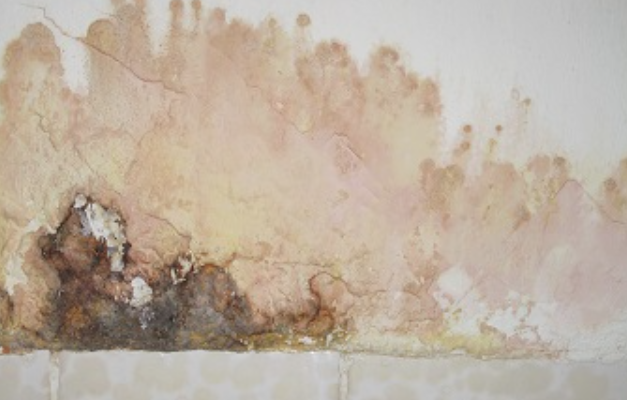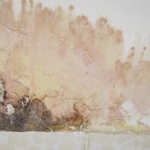Prevent Mold In Your Home: Essential Tips for Mold Prevention
Mold is not just unsightly; it can also pose serious health risks and damage your home’s structural integrity. Preventing mold in your home is crucial to maintaining a safe and healthy living environment. In this article, we will explore the essential steps you can take to keep mold at bay, from managing humidity control moisture levels to detecting potential sources of water leakage and ensuring your HVAC system is mold-free.
1. Manage Indoor Humidity
Managing indoor humidity is a critical aspect of mold prevention in your home. Mold thrives in environments with excess moisture, making it essential to maintain humidity levels below 50% to discourage mold exposure and its growth. Here, we will delve deeper into various strategies and tools to effectively manage indoor humidity.
- Use a Dehumidifier: A dehumidifier is a valuable tool in controlling indoor humidity. These devices work by drawing moisture from the air, helping you maintain the desired humidity level in your home. Place a dehumidifier in areas that are more prone to excess moisture, such as basements, bathrooms, and kitchens. Regularly empty and clean the dehumidifier’s water collection tray to prevent mold growth within the unit.
- Ventilation: Proper ventilation is essential to prevent humidity from accumulating in enclosed spaces. When cooking, turn on exhaust fans or open windows to allow steam and moisture to escape. In the bathroom, running the exhaust fan during and after showering helps reduce humidity levels. Additionally, ensure that your attic and crawl spaces are adequately ventilated to allow moisture to dissipate.
- Monitor Indoor Plants: Houseplants release moisture into the air through a process called transpiration. While this can contribute to a healthier indoor environment, it can also elevate humidity levels. If you have a significant number of indoor plants, consider relocating some of them to rooms with better ventilation or using a dehumidifier to balance the humidity.
- Fix Leaky Pipes and Faucets: Leaky pipes and faucets can introduce excess moisture into your home. Regularly inspect plumbing fixtures and address leaks promptly. Not only will this save water and reduce your utility bills, but it will also help maintain lower humidity levels.
- Seal Cracks and Gaps: Seal any cracks or gaps in your home’s walls, windows, and doors, as these can be entry points for humid outdoor air. Proper sealing not only conserves energy but also keeps outdoor humidity at bay.
- Limit Drying Clothes Indoors: Hanging wet laundry to dry indoors can significantly raise indoor humidity levels. Whenever possible, use a clothesline or dryer to avoid introducing excess moisture into your living spaces.
- Use Air Conditioning: Air conditioning units not only cool your home but also dehumidify the air. Running your AC during humid weather can help maintain comfortable and mold-resistant indoor conditions. Make sure your air conditioner is properly maintained and equipped with a clean filter to optimize its dehumidifying capabilities.
- Regularly Check and Empty Drip Pans: Appliances like refrigerators and freezers have drip pans that collect excess condensation. Ensure these pans are empty and clean, as stagnant water can encourage mold growth.
2. Promptly Address Water Spills
Addressing water spills promptly is crucial in preventing mold growth in your home. Water spills, whether caused by a plumbing issue, a roof leak, or an accidental spill, can create an ideal environment for mold to thrive. Here are some detailed steps on how to promptly and effectively address water spills:
- Assess the Situation: When you discover a water spill, the first step is to assess the extent of the damage. Determine the source of the leak or spill and evaluate the affected area. Is the water confined to a small, easily manageable area, or has it spread to a larger space, potentially causing damage to walls, ceilings, or floors?
- Turn Off the Water: If the water spill is caused by a plumbing issue, turn off the water source immediately to stop further water from flowing into the affected area. This step is essential to prevent the spill from getting worse and causing additional damage.
- Safety First: Before addressing the water spill, ensure your safety. If the water spill is in an area with electrical outlets or appliances, be cautious. If you’re unsure about electrical safety, it’s advisable to turn off the electricity to the affected area or even the entire house if necessary.
- Begin Cleanup: Start by removing standing water using towels, mops, or a wet/dry vacuum cleaner, depending on the volume of water. The sooner you remove the excess water, the better, as it reduces the risk of mold growth and structural damage.
- Dry Thoroughly: Once the standing water is removed, thoroughly dry the affected area. Use fans, dehumidifiers, and open windows to promote air circulation and expedite the drying process. Mold needs moisture to grow, so thorough drying is essential to preventing its development.
- Sanitize and Disinfect: After the area is completely dry, use a suitable sanitizer or disinfectant to clean the affected surfaces. This step helps eliminate any potential microbial growth that may have started before you addressed the spill.
- Inspect for Hidden Damage: In some cases, water may seep into hidden areas, like within walls or under flooring. Inspect the surrounding areas for signs of hidden damage, such as discolored spots, bulging walls, or a musty odor. If you suspect hidden damage, it’s advisable to consult a professional for a more thorough assessment.
- Repair the Source: Once you’ve addressed the immediate damage, it’s essential to repair the source of the water spill. If it’s a plumbing issue, call a professional plumber to fix the problem. For roof leaks, contact a roofer. Promptly fixing the source of the water issue is vital to prevent future occurrences.
- Prevent Future Spills: Take preventive measures to avoid future water spills. Regularly inspect your plumbing, roof, and home’s structure to identify and fix potential trouble spots before they become significant problems.
3. Inspect for Water Leakage and Condensation
Inspecting for water leakage and condensation is a fundamental part of mold prevention. Water intrusion, whether from leaks or condensation, can create the ideal conditions for mold growth. Here’s a more detailed exploration of this critical aspect of preventing a mold problem in your home:
- Regular Inspections: Make it a routine to inspect your home for signs of water leakage and condensation. Regular inspections can help you catch issues early, preventing them from developing into more significant problems. Ideally, you should conduct these inspections at least twice a year, especially during seasonal changes when temperature and humidity levels fluctuate.
- Check Plumbing and Fixtures: Examine your plumbing system and fixtures for any signs of leakage. Look for water stains, wet spots, or discolored areas on ceilings, walls, and floors. Pay particular attention to areas where pipes are located, such as under sinks, around toilets, and near water heaters.
- Roof and Ceiling Inspections: Check your roof and ceiling for any signs of leaks. After heavy rainfall or snow, inspect your ceilings for water spots or discoloration. Inspect your attic, too, for signs of moisture infiltration, as a poorly ventilated or insulated attic can lead to condensation issues.
- Window and Door Frames: Inspect the areas around windows and door frames for any gaps or signs of moisture. Improper sealing can allow moisture to seep in, leading to condensation and mold growth. Address any gaps or sealing issues as soon as they are identified.
- Ventilation and Condensation: Areas like bathrooms, kitchens, and laundry rooms are prone to condensation due to high humidity levels. Ensure that these spaces are adequately ventilated to reduce the buildup of moisture. Check exhaust fans for proper functionality and ensure they are used when needed.
- Hidden Leaks: Keep in mind that water leaks can sometimes be hidden behind walls or under flooring. Be vigilant for any signs of musty odors, warping, or discoloration, as these can be indicative of concealed water damage. If you suspect hidden leaks, consider using a moisture meter to identify areas with elevated moisture levels.
- Foundation Inspection: Inspect the foundation of your home for cracks or signs of water infiltration. A damaged foundation can allow water to seep into your basement or crawl space, leading to mold problems. Address foundation issues promptly to prevent water intrusion.
- Maintain Gutters and Downspouts: Clogged or malfunctioning gutters and downspouts can lead to water overflowing and running down the exterior walls of your home. This can result in water entering your home, causing structural damage and mold growth. Regularly clean and maintain your gutters to ensure they are functioning properly.
- Professional Inspection: If you are unsure about the source of a leak or the extent of condensation issues, consider hiring a professional home inspector. They can conduct a thorough evaluation of your home, identify problem areas, and provide recommendations for remediation.
4. HVAC System Maintenance
Proper HVAC (Heating, Ventilation, and Air Conditioning) system maintenance is crucial for preventing mold growth in your home. HVAC systems, if not adequately maintained, can become breeding grounds for mold and distribute mold spores throughout your living spaces. Here’s a comprehensive look at the importance of HVAC system maintenance in mold prevention:
- Regular Inspections and Maintenance: To ensure that your HVAC system remains mold-free, schedule regular inspections and maintenance by a qualified technician. At a minimum, aim for annual HVAC check-ups, preferably before the start of each season. These inspections will include cleaning and inspecting various components of your system, such as the air handler, ductwork, and condensate drain.
- Change Filters: HVAC filters trap dust, allergens, and potentially mold spores. It’s essential to change these filters regularly, as recommended by the manufacturer or your technician. A dirty or clogged filter can hinder airflow and provide a conducive environment for mold growth.
- Clean Ductwork: Ductwork can accumulate dust, debris, and moisture over time, creating an environment where mold can thrive. A professional HVAC technician can clean and inspect your ductwork to prevent mold growth and maintain optimal airflow.
- Monitor Condensate Drain: The condensate drain in your HVAC system is designed to remove excess moisture produced during the cooling process. If it becomes clogged or inefficient, it can lead to water buildup and create conditions for mold growth. Regularly check and clean the condensate drain, or have a technician do so during your annual maintenance.
- Inspect Coils and Fans: Both the evaporator and condenser coils, as well as the blower fans, can accumulate dust and moisture. Moisture on these components can lead to mold growth. During HVAC maintenance, these parts should be cleaned and inspected for signs of mold or excessive moisture.
- Maintain Proper Humidity Levels: Your HVAC system plays a significant role in controlling indoor humidity. If your home has a humidifier or dehumidifier integrated into the HVAC system, ensure it is functioning correctly and set to maintain humidity levels below 50%. This helps create an environment less conducive to mold growth.
- Seal Ductwork and Insulate: Ensuring that your ductwork is properly sealed and insulated can prevent condensation, which is a common contributor to mold growth. Sealing and insulating ducts prevent warm, humid air from coming into contact with cold duct surfaces, reducing the risk of moisture accumulation.
- UV Light Air Purifiers: Consider installing UV light air purifiers in your HVAC system. These devices use ultraviolet light to kill mold and other microbes that may circulate in the air. While they can be effective, they are typically more useful as a complementary measure alongside other maintenance practices.
- Professional Mold Inspection: If you suspect mold in your HVAC system or experience mold-related health issues, consider having your system inspected for mold by a certified mold remediation specialist. Mold found within the HVAC system requires professional remediation.
- Homeowner Vigilance: In addition to professional maintenance, be vigilant as a homeowner. Keep an eye out for musty odors, unusual moisture around vents or registers, and visible signs of mold growth. Promptly report any concerns to a qualified technician.
Mold prevention is an essential part of home maintenance, as it not only safeguards your property but also promotes a healthy living environment. By following these mold prevention tips, you can significantly reduce the risk of mold taking hold in your home. Control indoor humidity, address water spills promptly, inspect for water leakage and condensation, maintain proper insulation, and ensure your HVAC system is mold-free. With these measures in place, you can enjoy a mold-free home, protect your health, and maintain the longevity of your property. Mold prevention is an investment in the well-being of your household and the preservation of your home.




























